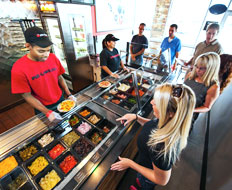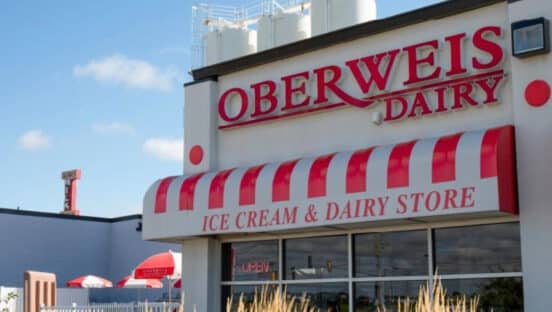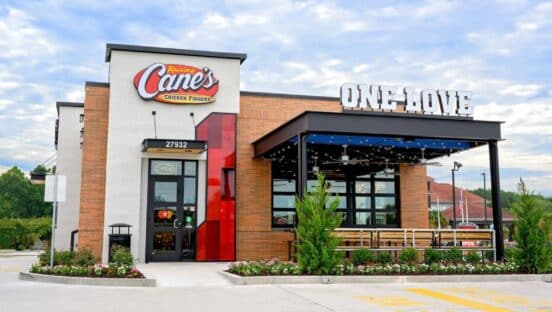Quick-service brands of all sizes spend significant amounts on advertising to build customer awareness. Yet the delivery of the brand promise is often left to chance, as the people charged with fulfilling that brand promise—the employees at the front counter, taking drive-thru orders, and otherwise on the front lines—rarely receive direct communication about the brand culture from corporate leadership.
That’s largely because it can be difficult to reach front-line employees. With high turnover, it doesn’t make sense to give company e-mail addresses to this group, especially since they’re not on a computer at work. Because they’re in various locations, they don’t even share geography.
The common default method of communication with most quick-serve employees is through franchisees or individual restaurant managers. The corporate management team communicates with restaurant managers of company-owned stores, then those managers spread the information to employees. With franchisees, the dynamics are a little different. Corporate team members aren’t necessarily in a position to tell franchise owners what to do. The dynamic demands that corporate avoids any semblance of preaching or demanding; the focus must remain instead on offering inspiration, innovative ideas, and helpful coaching.
The good news is that this intended audience is receptive: Quick-service employees seem to be craving interaction with the corporate office, according to a recent national study of non-desk workers (those who aren’t sitting in a cubicle or otherwise in front of a computer all day) by Tribe. Of these respondents, 50 percent said they do not know their company’s vision for growth, and more than 34 percent said they “hardly ever” receive corporate communication.
Results indicate that without direct communication from corporate—particularly about the company vision, values, and brand promise—important nuances can be lost in translation.
What’s more, this research indicates that non-desk employees interpret a lack of communication from corporate as evidence that the company does not value or respect them. Not only are these employees less engaged than they could be, but they also have a poor understanding of what the brand represents. Without understanding the brand culture, the crewmembers making the food and interacting with customers are ill equipped to deliver the desired customer experience.
All of this is not to say manager communication with employees isn’t important. Respondents to the 2012 Tribe study’s online questionnaire and personal interviews indicate that these team members value communication from director managers. More than 60 percent listed their managers as one of the preferred channels for receiving company communications. However, the research also indicates a few potential issues with direct managers being the only source of company news.
Employees cited two issues with this system of defaulting all internal communication to their direct managers: consistency of message and timeliness of delivery. Especially with sensitive news or major changes, non-desk employees dislike the fact that employees working different shifts or in other locations might know the scoop before they do, and that even individuals on their own team are not always informed simultaneously. They also mentioned the inconsistencies that result from communications coming through their manager’s filter, some citing the children’s game “Telephone,” where a message becomes more and more garbled as it passes from one player to the next.
Quick-service employers have a huge opportunity to dramatically improve the customer experience by increasing communication between corporate leaders and those working in restaurants, thus making sure those employees on the front lines are better equipped to deliver the desired customer experience. Here are four possible ways to seize the opportunity:
1. Spend face time with employees. A common complaint from quick-serve employees is that company leadership doesn’t understand the realities of their job. When top management takes the time to visit restaurants, meet employees, and talk about the brand, it conveys a sense of appreciation for those who are working on the front lines. What’s more, management may gain valuable feedback from the people who are interacting with customers every day.
2. Develop an employee magazine. Consider producing a publication celebrating the culture of the brand, sharing best practices, and highlighting employees who exemplify the brand. It’s a great way to showcase the type of employee behavior preferred or even required to deliver the desired customer experience. Some companies send publications to employees’ homes, but a more cost-effective method is to have a stack of employee magazines or newsletters delivered to each store.
3. Start your own radio show. Another possibility is to develop an audio recording that features messages sandwiched between music. The messages might communicate company values, service tips, and other cultural elements that impact the customer experience. Some companies have experimented with this sort of infotainment playing in the kitchen for employees to hear.
4. Put it on a poster. This low-tech approach may not be very sophisticated, but it can be extremely effective. Develop a series of posters that rotate on a monthly or quarterly basis, and hang them in areas where employees will be sure to see them. That might be on the door of the walk-in, on the wall where they clock in and out, or next to the back door. More than one company has even used the posters in employee bathrooms.
You can spend zillions of dollars building strong brand awareness, but one surly drive-thru attendant can destroy a customer relationship. With word of mouth now expanding exponentially through social media, there’s the ever-present danger that one disgruntled customer will share that bad experience with a whole list of others.
When companies are successful at building engagement with and through front-line employees, the brand benefits in a multitude of ways. Consumers are more likely to experience the brand as the fulfillment of the brand promise. Front-line employees begin to find more meaning in their jobs, as they start to see that they’re part of something bigger. And, again, corporate will benefit from listening to ideas and insights that come from the front line. After all, those restaurant employees are the ones interacting with the customer every day; they are in the best position to see what works about the brand—and what doesn’t.













